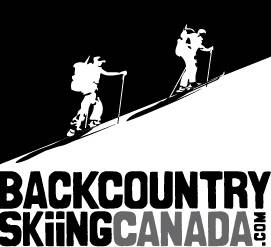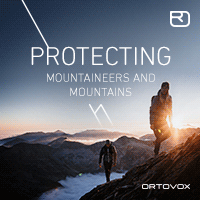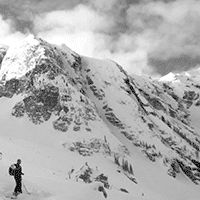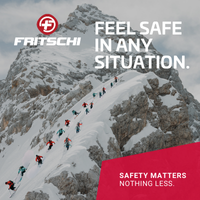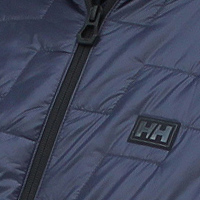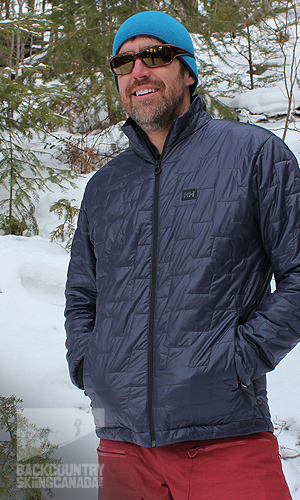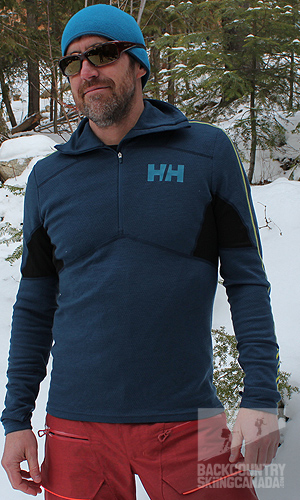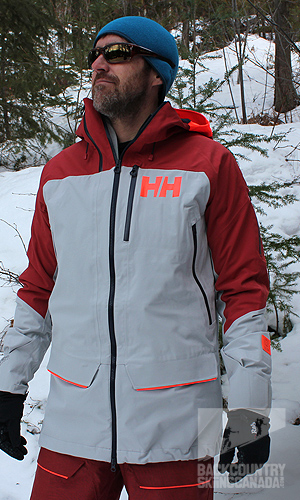


SITE LOGIN
-
REVIEWS
- Ski Gear
- Clothing
- Accessories
- Off-Season Gear
- Lifestyle
- Lodges and Accommodation
- Nutrition
- Manufacturers
- Destinations
- Training
- Gear of the Year
- Best New Summer Gear
-
Holiday Gift Guide
-
Holiday Gift Guide 2024
- Holiday Gift Guide 2024 Base Layers
- MSR Explore Revo Snowshoes
- Fieldsheer Backcountry Heated Jacket
- Fieldsheer Premium 2.0 Merino Heated Socks
- MEC Hut Booties and Slippers
- Arc’teryx Kopec GTX Shoe
- Arc’teryx Kragg Insulated Approach Shoes
- Gregory Verte 18 Backpack
- Grundens Deck-Boss Ankle Boot
- MEC Northern Light Vest
- Montec-Scope-Ski-Goggles
- Mountain Hardware Kor Airshell Hoody
- Mountain Hardware Kor Alloy Crew
- Arcade Atlas Belt
- Dynafit Ridge Dynastretch Jacket
- Shokz OpenRun Pro 2 headphones
- Buff Merino Move Multifunctional Neckwear
- Bootdoc Foot Warmer
- Cotopaxi Allpa 42L Travel Pack
- DPS LastBag
- DPS PHANTOM Glide At-Home Kit
- DPS Mission Quiver Roller
- Dragon Amped sunglasses
- Dragon DX3 Plus OTG photochromic goggle
- Fuse Lenses Anclote Flashback
- Garmin Fenix 8 Solar Sapphire Watch
- Gregory Alpaca Gear Tote 30
- Hotronic Boot Dryer
- MEC Aluminum Pot Set
- Gnara Go There Pants
- Grundens Shackleton 2.0 Duffel
- Jones Deeper 19L Backpack
- Le Bent Core Midweight Crew base layer
- Leatherman ARC
- Montane Nordes Hooded Softshell Jacket and Pants
- Helly Hansen Odin Everdown Hooded Jacket
- Helly Hansen Verglas Infinity Shell Jacket 2.0
- Montec Fawk Ski Jacket
- Pomoca Free Pro 2.0 Skins
- Rab Glaceon Pro Down Jacket
- Rab Khroma Converge GORE-TEX Ski Jacket & Pants
- Smith Squad MAG Goggles
- Stellar Guide Aerogel Hybrid Hood 2.0
- Stellar Ultralight Down Hood 2.0
- Arms of Andes Alpaca Half Zip & Wool Leggings
- Cotopaxi Allpa 70L Duffel Bag
- Giro Taggert Mips Helmet
- Loonr Hi Flyer Boots
- Paka Mountain Crew
- Roll Recovery SUPERPLUSH Classic Shoes
- Smartwool Smartloft Hooded Jacket and Pants
- Ortovox Switchback 32 Ski Touring Backpack
- Cotopaxi Allpa X 3L Hip Pack
- Giro Sagen Ski Goggle
- Icebreaker Ski+ Over the Calf Socks
- MEC-Fireside-Fleece-Snap-Pullover
- Montec Roast Mittens
- Mountain-Hardware-Sunblocker-Hoody
- MSR Titan Kettle 900 ml
- Tailgate-Industries-The Gondom-Goggle-Cover
- Wild Country Rope Tarp
- Bootdoc Race Merino PFI 50 Socks
- Remind Soles Destin Impact Insoles
- Kari Traa Rose Baselayer Half Zip Top and Pants
- Le Bent Midweight Quarter Zip
- Ombraz Dolomite Sunglasses
- Ortovox Fleece Rib Hoody
- Ortovox Merino Thermovent Base Layer
- Smartwool Intraknit Merino Tech Half Zip
- Suunto Wing Bone Conduction headphones
- Sweet Protection Adapter Mips Helmet
- Sweet Protection Connor Rig Reflect Goggles
- Zeal Optics Selkirk Glacier Glasses
- Norrona more flex1 Pants
- Norrona Octa Zip Hood
- Norrona Lyngen Alpha100 Zip Hood
- MEC Deluxe Pillow
- Holiday Gift Guide 2023
- Holiday Gift Guide 2022
- Holiday Gift Guide 2021
- Holiday Gift Guide 2020
- Holiday Gift Guide 2019
- Holiday Gift Guide 2018
- Holiday Gift Guide 2017
- Holiday Gift Guide 2016
-
Holiday Gift Guide 2024
- Pro Skier Interviews
- NEWS
- STORE
- ROUTES
- LODGING
-
VIDEOS
- 2022/23 Gear Reviews
- 2021/22 Gear Reviews
- 2020/21 Gear Reviews
- 2019/20 Gear Reviews
- 2018/19 Gear Reviews
- 2017/18 Gear Reviews
- 2016/17 Gear Reviews
- 2015/16 Gear Reviews
- 2014/15 Gear Reviews
- 2013/14 Gear Reviews
- 2012/13 Gear Reviews
- 2011/12 Gear Reviews
- 2020 Outdoor Retailer
- 2019 Outdoor Retailer
- 2018 Outdoor Retailer
- 2017 Outdoor Presscamp
- 2017 Outdoor Retailer
- 2016 Outdoor Presscamp
- 2016 Outdoor Retailer
- 2015 SIA Show
- 2014 Outdoor Retailer
- 2013 SIA Show
- 2012 Outdoor Retailer
- Tips and Tricks
- Backcountry Skiing
- SAFETY
- ABOUT
- REVIEWS
- NEWS
- STORE
- ROUTES
- LODGING
-
VIDEOS
- 2022/23 Gear Reviews
- 2021/22 Gear Reviews
- 2020/21 Gear Reviews
- 2019/20 Gear Reviews
- 2018/19 Gear Reviews
- 2017/18 Gear Reviews
- 2016/17 Gear Reviews
- 2015/16 Gear Reviews
- 2014/15 Gear Reviews
- 2013/14 Gear Reviews
- 2012/13 Gear Reviews
- 2011/12 Gear Reviews
- 2020 Outdoor Retailer
- 2019 Outdoor Retailer
- 2018 Outdoor Retailer
- 2017 Outdoor Presscamp
- 2017 Outdoor Retailer
- 2016 Outdoor Presscamp
- 2016 Outdoor Retailer
- 2015 SIA Show
- 2014 Outdoor Retailer
- 2013 SIA Show
- 2012 Outdoor Retailer
- Tips and Tricks
- Backcountry Skiing
- SAFETY
- ABOUT
TOP VIDEOS
Helly Hansen Lifaloft
Having just returned from a few days of skiing at Fernie Alpine Resort with the Helly Hansen marketing and PR team, I wanted to extol the virtues of their LifaLoft Insulation. This innovative insulation can be found in a wide variety of their apparel and a few of the pieces I was fortunate enough to test out over the few days of skiing we enjoyed. Fernie Alpine Resort was the chosen test destination since Helly Hansen has a long and trusted relationship with the Fernie Ski Patrol. This team of first aid and avalanche professionals doesn’t just wear the Helly Hansen apparel, they actually test it day-to-day in some of the harshest environments and provide valuable feedback on improvements and changes to the Helly Hansen design team.
Hear the virtues of Helly Hansen's Lifaloft Insulation straight from the pros who know..
- SHOW THE REST OF THE REVIEW / PHOTOS / VIDEOS
-
Helly Hansen was founded in 1877 in Norway by Helly Juell Hansen who at the age of 35 started producing oilskin jackets, pants and tarps made from linen soaked in linseed oil. These were some of the first waterproof fabrics ever made and just one of several Helly Hansen firsts. In 1914 after Juell’s death the company was passed his son Helly.
In the mid-1970s Helly Hansen introduced the worlds first technical base layer using what they called LIFA fibres which went on to be an effective solution for regulating body temperature and a timeless material found in most adventurer’s closet. This past fall, Hello Hansen did LIFA one better and released their latest brainchild—Lifaloft by Primaloft. Lifaloft is 20% lighter than Polyester since it’s made from 75% Lifa fibres and 25% PrimaLoft insulation. This makes it less bulky while still being incredibly warm. It’s able to capture and retain heat by trapping air in microscopic air pockets which means you stay warmer and since Lifaloft is hydrophobic it has great moisture wicking properties and is also quick drying.
Lifaloft Insulator Jacket
With high alpine winds dawn to dusk at Fernie Alpine Resort, the Helly Hansen Lifaloft Insulator Jacket was an ideal mid-layer under the Helly Hansen Ridge Shell 2.0 Jacket. It kept me warm while skiing laps for two days, yet wasn’t stifling when the sun poked out at lower elevations on the mountain. Its thin design wasn’t nearly as bulky as down, yet it provided an amazing amount of warmth. I wore it over the Helly Hansen Lifa Merino Hybrid Top base layer, which together combined to keep me warm without breaking a sweat. I especially liked the absence of a hood on the Lifaloft Insulator Jacket as this allowed it to be layered more effectively but for those that cannot go without, there is also a hooded version to keep you happy. For apres ski when a shell was not needed the Lifaloft Insulator Jacket was all that was required. Should ever a light rain develop, the Perfluorocarbons (PFC) Free Durable Water Repellent (DWR) will keep you dry as it easily repeals moisture. The Bluesign approved fabric and DWR not only work, but they’re not harmful to the planet. Combine this with Lifaloft’s smaller carbon and water footprint—when compared to standard polyester and you’ve got a super warm mid-layer that’s also environmentally sound. In fact, Polypropylene garments, which LIFA and LIFALOFT is made of, have a 16% lower water footprint than Polyester garments and consume much less water in the manufacturing process than wool or cotton insulations.
Features:
- LIFALOFT insulation by PrimaLoft
- Water resistant and windproof fabric
- Fibre and down proof fabric construction
- PFC Free DWR
- LIFALOFT™ unique quilt design
- Lycra edge band around collar and cuffs for clean finish
- Full inner front zipper placket for wind protection.
Also tested on this media trip were the Helly Hansen’s Ridge Shell 2.0 Jacket is made with a light waterproof/beathable Helly Tech Professional 3L stretch fabric. It’s a fully featured freeride jacket complete with Life Pocket+ which preserves your phone or camera’s battery life by keeping it three times warmer by using PrimaLoft Gold Insulation Aerogel. The Ridge Shell 2.0 Jacket retails for $650 CAN / $550 US and yes, accenting pants are also available. For base layers, I tested the Lifa Merino Hybrid Top is Helly Hansen’s warmest base layer and made from 100% merino wool and combined with Lifa fibres in a 2 layer construction. It retails for $130 CAN / $120 US and is super comfy and warm.
Helly Hansen’s Lifa Merino Hybrid Top.Helly Hansen’s Ridge Shell 2.0 Jacket.Verdict:
Any new insulation technology which can keep you warmer with less bulk is a backcountry skier’s dream. Helly Hansen’s new LIFALOFT insulation which is made by PrimaLoft is not only light and compact but it’s also water resistant and windproof so I found it to keep me very warm on even the harshest of weather days. The Lifaloft Insulator Jacket was small and compact enough that it works well as a ski touring layer and fits in the smallest of touring packs when not needed. This new insulation has all the properties of a great mid layer for most adventures and works well as an external jacket when the wind picks up on the skin track.
Since the face fabric of the Lifaloft Insulator Jacket doesn’t breath all that well it can build up heat when you red line your cardio meter. If Helly Hansen were to make an active insulation piece with LIFALOFT this would be a backcountry skiers dream come true. Fingers crossed.
 |
PROS:
|
 |
CONS:
|
SPECS:
Lifaloft Insulator Jacket
Price: $250CAN / $200US
Insulation: Lifaloft 80g
Shell fabric: 100% Polyamide
Sizes: S, M, L, XL, XXL
Colours: Catalina Blue, Graphite Black, Grenadine, Black Matte, Olympian Blue, Black
RATING: 8.5/10
Comfort 1.5/2
Innovation 1.5/2
Durability 2/2
Quality/Price 2/2
Did we miss something? Are we totally out to lunch? Let us know what you think. People like/dislike gear for different reasons so chime in below and we'll get a well-rounded evaluation. You'll need to login or register before you can comment but it only takes a few seconds, then you're good to go.
